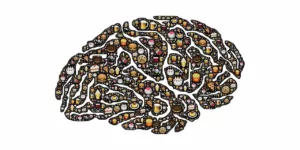We all know what it’s like to crave something. Whether it’s a rich piece of chocolate cake, an ice-cold beer, or a puff of a cigarette, you’ve experienced that feeling of wanting something so badly that you’d do anything to get it. In isolation, this isn’t the worst thing in the world. But when it becomes habitual, there’s a problem.
4 Tips for Pushing Past Cravings
A craving is a hard thing to define. In essence, it’s a strong desire for something that you don’t currently have. A craving can be experienced physically, emotionally, and/or sexually. To some, there may even be a spiritual component to cravings.
Most commonly, people experience cravings with things like food, drugs, alcohol, or sexual gratification. Though it’s technically possible to crave anything that yields a desired feeling or outcome.
Regardless of what you crave, there are some tried and true methods you can use to push past and experience freedom. Let’s take a look at a few of them:
- Avoid Triggers
Cravings are typically caused by triggers. And if you talk to psychologists and therapists, they’ll tell you that most cravings are caused by one of the following: cues, expectations, beliefs, attention, priming effect, or stress.
If you want to kill cravings, you start by avoiding the triggers. This can require a serious shift in your lifestyle – so take the time to carefully consider how you want to proceed prior to diving in.
- Try Scientific Methods
The challenge with overcoming a craving is that the stimulant – the thing that gratifies and satiates – is typically something that’s well within reach. In other words, satisfying the craving requires some simple exertion or exchange. That’s it. So it’s not enough to put the item/experience out of reach. You have to dig down and attack the craving at the core.
Here are a couple of tactics that address cravings on a very biological/scientific level:
- VNS. Vagus nerve stimulation, or VNS, is a process by which you arouse the vagus nerve for the purpose of changing the body’s physical and mental response to certain factors. In addition to increasing focus and reducing stress, VNS is known to reduce cravings by replacing negative thoughts with positive ones. Products like Xen by Neuvana make it easy to leverage VNS anywhere and anytime.
- Thought deflection. Buddhist monks are skilled at the art of thought deflection, which involves steering negative thoughts and attention elsewhere, or changing the content of your thoughts so that the craving is no longer your primary focus. Mastering the art of thought deflection can take a lifetime, but you can use simple strategies like playing a game of Tetris on your phone every time you feel a craving come on. This simple act redirects your energy. Once you complete the game, you may find that the craving has dissipated.
It’s easy to look at these tactics as “far out” ideas, but many people find them to be effective. Try them out and see what you think.
- Discover Accountability
It’s hard to muster up enough self-discipline to continually fight a craving day after day and month after month. Until you get to a point where you’re in control of your thoughts, it’s wise to have an accountability partner in your corner. This is someone who exists to keep you honest. (Make sure your accountability partner is someone who does not deal with the same cravings as you, otherwise the relationship will be futile.)
- Replace With Good Habits
It’s not enough to remove the craving – you need to fill it with something else. This is why addiction centers and therapists often recommend people in rehab form new, positive habits. What new habit can you implement as part of your daily routine? (Exercise is a great one!)
Adding it All Up
Cravings rarely disappear without a trace. Even if you overcome an addiction or push past it, there will always be faint undertones of the craving evident in your life. The key is to avoid dwelling on these cravings and/or seeing them as failures. Instead, recognize your limited capabilities and surround yourself with the right habits and people. That’s the solution to living a meaningful life.
Written by:
Lara Harper








